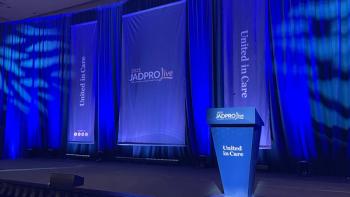
- Rx Road Map: Subcutaneous Daratumumab in Multiple Myeloma
Injection Time Can Encourage Bonding During Myeloma Care
The extended injection time for subcutaneous daratumumab in those with myeloma can serve as an opportunity for oncology nurses to check in with patients.
The extended injection time for subcutaneous daratumumab and hyaluronidase-fihj (Darzalex Faspro) in patients with multiple myeloma can serve as an opportunity for oncology nurses to check in with patients, according to a nurse with experience in this type of administration.
The administration of the subcutaneous agent can reach up to 5 minutes, Heather Wenberg, BSN, RN, OCN, regional director of nursing at the American Oncology Network, said in an interview with Oncology Nursing News. For this reason, she says, nurses should be encouraged to use this time to check in with their patients and get to know them better.
Despite longer chair times, the subcutaneous administration of daratumumab can lead to a reduced amount of time that patients with multiple myeloma are in the clinic receiving treatment overall, Wenberg continues.
She also mentioned that because the injection is larger than many oncology nurses are used to, they may have concerns, especially as it relates to injection sites. The injection sites should be switched from one appointment to the next, said Wenberg, but should cause little to no irritation, especially after the first injection.
Transcript:
The [
The one challenge for nurses is [that] when you’re nursing school, you’re taught you have to divide up injections, because you have certain volumes that can go in certain areas. And this is a 15 mL injection. That would be the only thing that would maybe concern them, but it’s not an irritant. You get the injection, it may swell up a little bit due to the volume, but usually it goes away quickly. Then for the next injection, you would never even know that they had one the week, [or] 2 weeks prior.
My advice would be that 3 to 5 minutes seems like a long time to administer that injection over, [but] at that time, that’s when I take the opportunity to try to have a conversation with the patient, see how they’re doing, check in on them. These types of patients, you tend to get to know them anyway, because they’re there all the time for treatment. And with multiple myeloma, they’re on treatment for years, so I like to hold a conversation with them during administration, take the focus away from the big injection that we’re giving.
But it’s pretty straightforward. Patients love it.
This transcript has been edited for clarity and conciseness.
Articles in this issue
about 2 months ago
Monitoring Immune Health With Subcutaneous DaratumumabNewsletter
Knowledge is power. Don’t miss the most recent breakthroughs in cancer care.


















































































